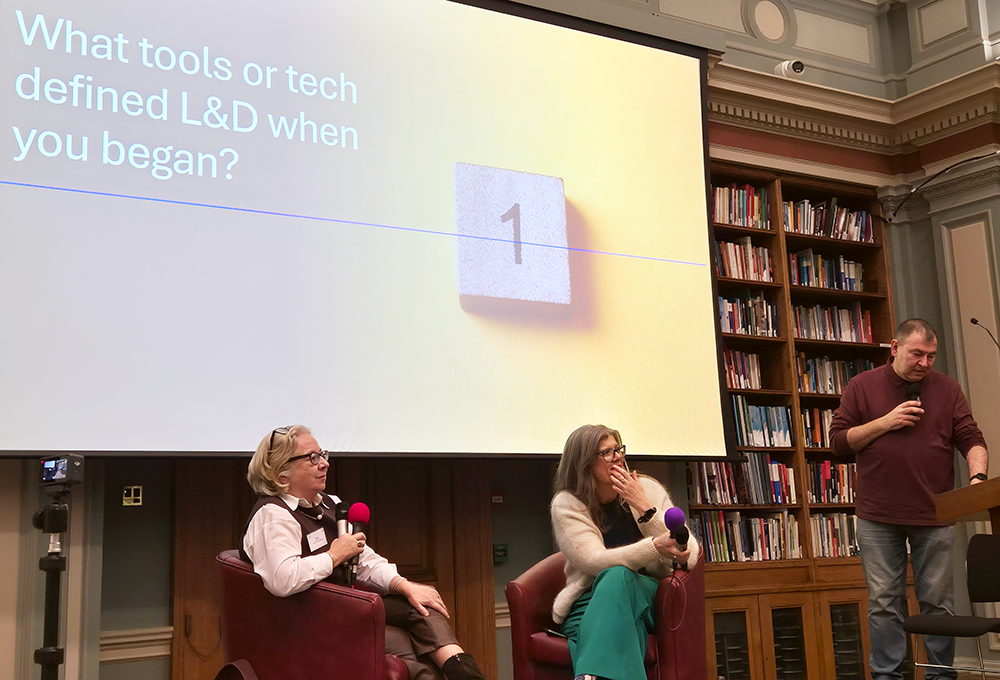Fake news is a bigger problem than ever but here’s what L&D can do about it, says Stephen Humphreys.
Reading time: 6 minutes.
A range of research studies published in recent years have shown that most traditional institutions – politicians, businesses, the media, even charities and traditional ‘pillars of the community’ like doctors, are less trusted today than they have been in the past, with politicians suffering most from the decline.
But one group seems to be bucking that trend and is gaining people’s trust faster than any other institution. It is ‘my employer’. Big Corporate may be less trusted today by customers, but when it comes to the employer-employee relationship, the situation is rather different.
This was a very interesting finding in the 2019 Edelman Trust Barometer study and it offers huge potential for business owners who want to develop greater engagement levels among employees and a more learning orientated, growth mindset workplace culture.
Conducted annually for the past two decades, Edelman’s Trust report shows that people place more trust in their employers than in any other single institution, with average trust levels running at 75% globally. This is 19 points higher than corporate business in general and 27 points more than government.
It is a significant finding for training professionals because it indicates that businesses are in a position to really positively influence their workforces.
Businesses could be supporting their employees with specialised courses to help them navigate the world of fake news and guide them towards legitimate sources of information by becoming more media literate.
At the same time, we know that people are also more worried about misinformation and fake news than ever before. 73% in the global Edelman study said they feared that fake news could be used as a weapon to influence (akin to propaganda) and people are generally finding it harder to separate facts from fiction and verify them.
Given that we live in an era of ‘citizen journalism’ where people Google for the answer to pretty much anything, that is not surprising. In the UK, 70% of Reuters Institute survey respondents agreed with the statement ‘I am concerned about what is real and what is fake on the internet’, up 12% on the results from a year ago.
This country is second in the world of nations with a population worried about fake news online, with Brazil having the worst problem.

Businesses could be supporting their employees with specialised courses to help them navigate the world of fake news and guide them towards legitimate sources of information by becoming more media literate. For example, here are four aspects of the media in context of wider society that every employee should be aware of, but many are not.
Awareness of commercial bias on the Internet
Research has shown UK adults are more reliant on their phones to manage their lives than ever before and yet they are not savvy when it comes to media literacy. Many people lack the critical skills needed to identify when they are being advertised to online and they have not understood the subtleties of ‘native advertising’.
This is broadly content in an online publication that is designed to look like the publication’s normal editorial content, but is paid for by an advertiser and intended to promote the advertiser’s product.
In addition, the Ofcom 2019 Media Literacy study highlighted that over 40% of people are not aware that YouTube is funded through advertising when they view video content online and 50% of consumers do not appreciate that Google’s revenues are actually generated through search advertising.
Does the truth exist?
The question of whether the truth actually exists has been a topic of debate for many years and now we have the notion of ‘post truth’, based around the idea that people will believe information if it resonates with their emotions and beliefs.
Rather than weighing up the facts, they will accept as ‘the truth’ information that appeals to their prejudices and sensibilities – hence why fake news has so much potential to influence. People don’t always appreciate why we tend to believe what we want to believe, but they should be aware.
Blatantly fake news vs. ‘alternative facts’
72% of people say they consume news information at least weekly and they share or post content at least several times a month. Now in response to the threat of fake news, they say they are turning to more ‘reputable’ sources, but do they know what that looks like?
Deciding what constitutes a reputable news source is frequently left to people to determine by themselves. It’s a difficult task when campaigns like ‘Fishwrap’ are freshening up old news and recycling it as new.
Anonymous fakers are using increasingly sophisticated techniques to publish misleading information and influence voters, for instance, using fresh stories that link back to old sources running on anonymous servers.
Seeing is believing, or is it?
We’ve all seen those memes and videos, many of them totally implausible. Sharks in swimming pools, monkeys playing the guitar. They are harmless and obvious fakes but many images are used to deliberately mislead and influence.
Teach your employees about easy ways to verify authenticity. A simple check to test whether an image is genuine is to right click on anything suspicious and use Google Reverse Image Search to confirm its source and production date.
The darker side to personalisation
Daily Mail or Sunday Times reader? Most people have a distinct preference when it comes to the places they go to for news and tend to use sources that are aligned to their beliefs. But what constitutes ‘news’ today goes far beyond just confirming our unconscious biases.
We are all fed information that is consistent with our user profiles and search histories. This means it’s too easy for the unsuspecting to be influenced by fake news. The media has proliferated to such a degree that we are being targeted with the messages we want to believe and it’s easy to live in our own personal informational worlds, or ‘bubbles’ as Barack Obama describes them.
The best fake news is incredibly real
There have always been people with kooky ideas and most of the time it’s pretty harmless ‘crazy uncle’ type content, but that’s the danger with fake news. The best examples are designed to be something plausible that you want to be true and when you are only being fed information that matches your beliefs, it’s even harder to be objective.
It’s akin to propaganda on a grand scale and often being done covertly, micro targeted to such a degree that people don’t even realise it.
Social media in particular plays a key role in the dissemination of fake news and for many people who access the Internet via a smartphone only, it’s their primary source of information. These users are now less likely than in 2017 to see views they disagree with on social media and 25% of respondents stated they ‘rarely’ see alternative viewpoints to have beliefs challenged.
Employers could be doing a lot more to improve media literacy and control the spread of fake news. The research highlights that they have the means to do so and now, elearning courses exist to provide the education needed.
About the author
Stephen Humphreys is general manager, UK at GoodHabitz.



